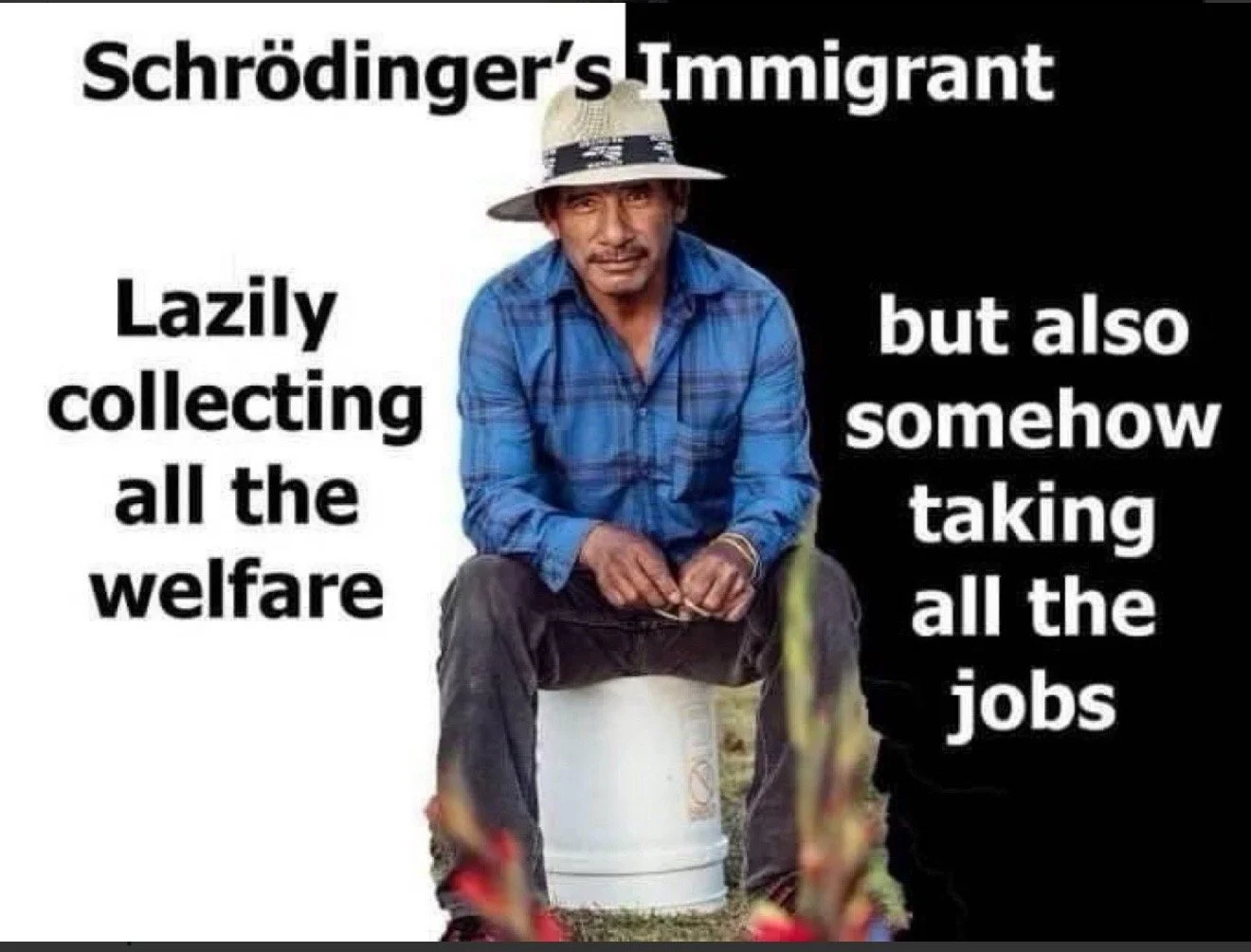Schrödinger’s Immigrant
You’ve seen the meme.
A man sits quietly in work clothes, staring back at a society that can’t decide if he’s a threat or a burden.
On one side: “Lazily collecting all the welfare.”
On the other: “Somehow taking all the jobs.”
This isn’t just internet sarcasm. It’s a masterclass in projection.
The Contradiction Isn’t a Flaw, It’s the Point
Let’s get this straight: no human being can be both unemployed and stealing your job. But the immigrant doesn’t exist in this narrative as a real person. He’s a screen. A symbol. A utility for whatever fear or frustration the observer needs to offload.
Wages feel low? Blame him.
Can’t find work? Blame him.
Think the system’s broken? Blame him.
And just like that, the people who actually control the levers of wealth and policy stay untouched. The immigrant becomes a distraction, both too lazy to contribute and too productive to compete with.
It’s a contradiction designed to manufacture resentment.
The Myth of the “Perfect Citizen”
The image hits harder because it exposes a deeper flaw in how we define “value.”
We don’t talk about systems. We talk about individuals. And we judge those individuals with rules that shift to suit our own comfort.
If you’re poor, you’re lazy.
If you’re working, you’re taking someone else’s opportunity.
If you succeed, you must have cheated.
If you struggle, you don’t belong.
No one wins that game. But immigrants lose it faster.
Why This Matters…
Because our stories shape our policies, and our policies shape people’s lives.
If we keep recycling the myth of Schrödinger’s Immigrant, this fictional figure who is somehow both mooching and stealing, we’ll keep ignoring the real issues: wage stagnation, broken healthcare, predatory capitalism, and the cynical politics that fuel division instead of solutions.
The immigrant isn’t the problem. The narrative is.
Final Word
This meme doesn’t just call out hypocrisy. It calls out a coping mechanism.
When people feel powerless, they reach for simple villains. That’s what this image exposes. And if we can see through the lie, maybe we can start having real conversations about fairness, labor, belonging, and who’s really benefiting from all this confusion.

